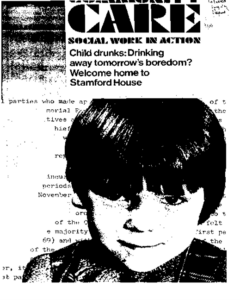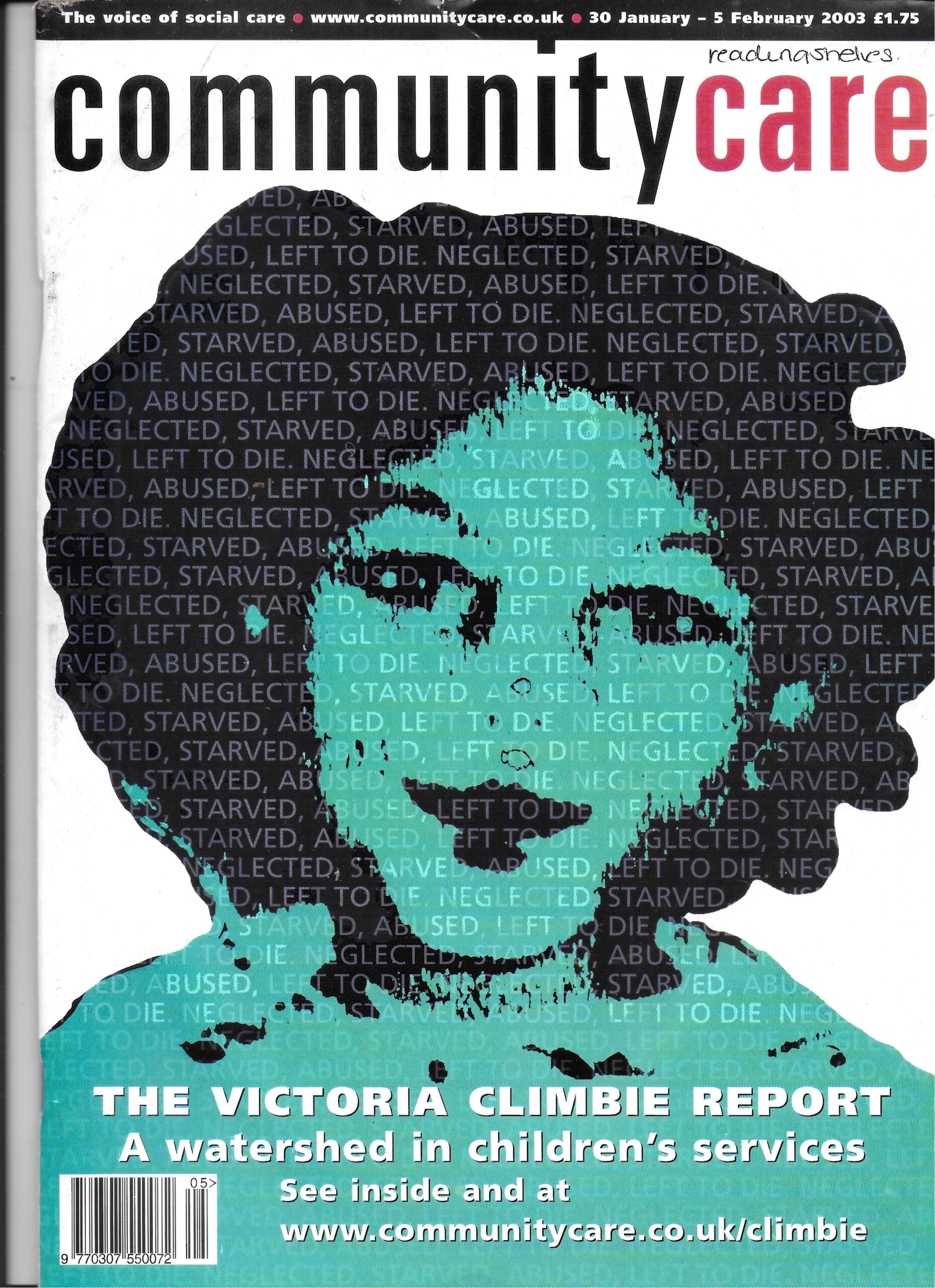
By Ray Jones
How confident are you that the DfE's national workload action group's work will reduce workloads for social workers?
- Not at all. (76%, 623 Votes)
- Not so much (21%, 169 Votes)
- Very (2%, 15 Votes)
- Quite (1%, 10 Votes)
Total Voters: 817
It is fifty years since the launch of Community Care as a resource for social workers and others within social services.

Maria Colwell, pictured on the front page of Community Care
It was also fifty years ago, in 1974, that the Maria Colwell inquiry report was published. Its significance was recognised at the time – it was on the front cover of Community Care – and has not diminished over the past five decades.
Maria was seven years old when she was killed, in 1973, by her stepfather after being returned from foster care to the care of her mother. It was shaped as a ‘tug-of-love’ story between the mother and the foster parents and it captured the attention of the media and the public.
Maria experienced severe neglect and also physical abuse. She suffered brain damage, a fractured rib, extensive external bruising and internal injuries.
A novel response to a child’s death
Following campaigning by the local MP and the local newspaper, a public inquiry was launched. At the time this was a new and novel response to a child’s death.
A previous inquiry in 1945 into the killing of twelve-year-old Dennis O’Neil was undertaken by a judge in private and took four days.
The Colwell inquiry, however, was held in public, had a three-person panel, and took 41 days. During the inquiry, the local authority social worker was described as ‘the defendant’, was threatened and harassed when arriving and leaving the inquiry, and had to have personal protection.
The inquiry report included concerns about inter-agency and inter-professional working, limitations in the sharing of information and the content of social work training.
Although Maria was seen by multiple other services, including the NSPCC, housing officers, health visitors and others, it was the social worker from what was then a recently established social services department who became the focus of media and public hostility.
So the dye was cast. For the first time, an inquiry into the death of a child was held in public. It took over a month of daily hearings and drilled down, in great detail, into the circumstances of one child, with all the benefits of unfettered time and hindsight. It also attracted extensive media attention.
The legacy of the Colwell inquiry
 It set the scene for the way in which many future inquiries were to be held, including the inquiry following the death of Victoria Climbie in 2002.
It set the scene for the way in which many future inquiries were to be held, including the inquiry following the death of Victoria Climbie in 2002.
This, however, is not the only continuing legacy of the Colwell inquiry. The government’s response following the publication of the inquiry report has shaped what is still the focus and process of much social work activity.
The early 1970s was the time when the unified profession of social work was created across the country, with local authorities in England, Wales and Scotland becoming the lead statutory social services agency and the homebase for the employment of most social workers.
The intention was that the departments would provide a family service embedded within communities to help individuals and families in difficulty and to prevent problems from escalating.
But the Colwell inquiry, press coverage and the government’s response meant that, by the mid-1970s, child protection was the predominant focus and first priority for social workers, and this included implementing a new raft of government-defined procedures.
There was the introduction of the infrastructure, which is still recognisable and dominant today, of child protection (then called child abuse) case and review conferences, child abuse plans, child abuse registers, and what were called area review committees (now local safeguarding children partnerships).
Prioritising child protection over family support
So, in 1974, the death of a seven-year-old little girl led to the process of inquiries into child deaths, where there is suspected abuse, and the child protection procedural infrastructure still recognisable today.
It pushed social workers and their employing social services departments to prioritise children’s risk assessments, risk management and monitoring over family support.
This led to further policy reviews and legislation in the late 1980s to seek to rebalance the work of social workers with children and families and to give more attention to disabled and older people.
Ray Jones is the author of ‘A History of the Personal Social Services in England: Feast, Famine and the Future’ (Palgrave Macmillan 2020) and led the Independent Review of Northern Ireland’s Children’s Social Care Services in 2022-23.





 Working with Gypsy and Traveller communities: tips for positive practice
Working with Gypsy and Traveller communities: tips for positive practice  Recognising and responding to shame in child protection: key practice points
Recognising and responding to shame in child protection: key practice points 




 Find out how to develop your emotional resilience with our free downloadable guide
Find out how to develop your emotional resilience with our free downloadable guide  Develop your social work career with Community Care’s Careers and Training Guide
Develop your social work career with Community Care’s Careers and Training Guide  ‘Dear Sajid Javid: please end the inappropriate detention of autistic people and those with learning disabilities’
‘Dear Sajid Javid: please end the inappropriate detention of autistic people and those with learning disabilities’ Ofsted calls for power to scrutinise children’s home groups
Ofsted calls for power to scrutinise children’s home groups Seven in eight commissioners paying below ‘minimum rate for home care’
Seven in eight commissioners paying below ‘minimum rate for home care’
 Facebook
Facebook X
X LinkedIn
LinkedIn Instagram
Instagram
The intention was that the departments would provide a family service embedded within communities to help individuals and families in difficulty and to prevent problems from escalating.
50 years later we are doing this
An interesting artcicle especial;ly for some of us who have been around a long while!
The point made about inter-agecy working and information sharing was prevalent then, and sadly still is!!!
No lessons seem to have been learnt…